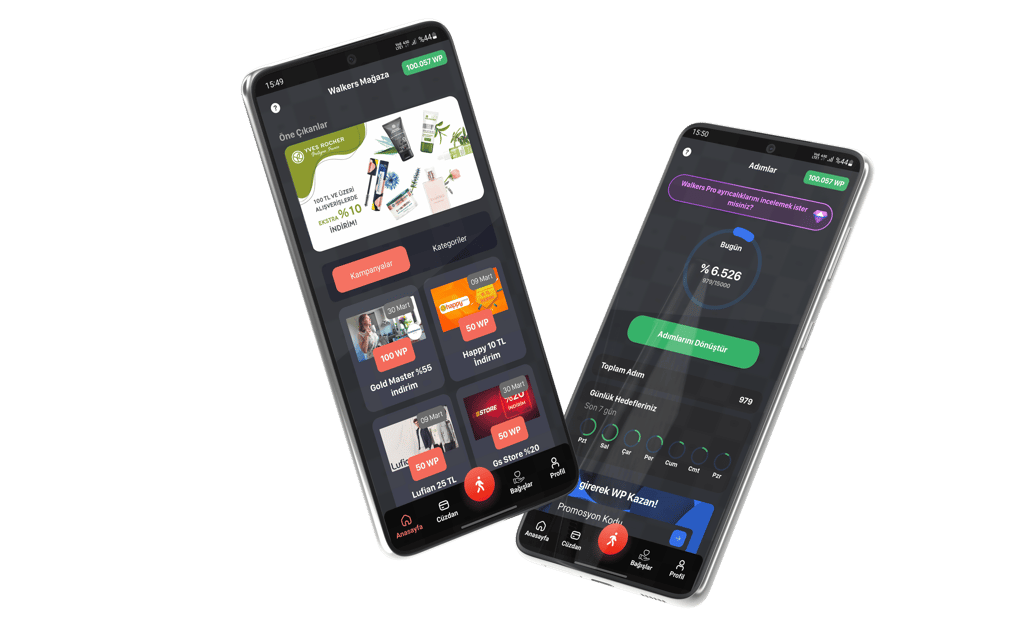Hard-Earned Industry Insights
Umit Can Yilmaz
10/14/20243 min read


Why Our Fitness App's NFT Strategy Failed (And What Worked Instead)
When we first designed Walkers, our gamified step-tracking app, I was convinced NFTs would be the perfect reward system. Special sneaker NFTs for reaching milestones, rare achievement badges, collectible route maps—it all sounded revolutionary. After three months of user feedback and terrible engagement metrics, I learned that most people just want tokens they can actually use, not digital collectibles they don't understand.
The Original NFT Vision (That Users Didn't Want) My team was excited about creating unique "Walker Sneaker" NFTs that would unlock special challenges and provide stat boosts. We designed 15 different sneaker styles with rarity tiers based on walking consistency. Hit 10,000 steps for 30 days straight? You'd get a rare "Endurance Runner" NFT.
We launched with great fanfare on crypto Twitter, minted 500 genesis sneakers, and waited for our fitness community to go crazy for them.
They didn't.
The Reality Check: User Feedback Hit Hard Our beta testers were brutal but honest:
"I don't understand why I need to own a picture of shoes to track my walks"
"Can I just get points or something? This NFT stuff is confusing"
"I earned this sneaker NFT but I can't figure out how to see it in the app"
"My friend has a better sneaker than me but we walk the same amount. How is that fair?"
The engagement numbers were devastating: Only 8% of users who earned NFTs actually claimed them. Most didn't even know they had earned anything because they never checked their wallets.
The Pivot: From NFTs to WLKT Tokens That's when we pivoted hard. Instead of collectible NFTs, we created WLKT tokens on Bitexen—fungible rewards that users could earn, trade, or hold. The psychology was completely different:
NFTs felt like homework: Users had to understand rarity, marketplaces, and digital ownership concepts.
WLKT tokens felt like points: Users instantly understood "walk more, earn more tokens, trade tokens for rewards or cash."
What Actually Worked in Gamification After the NFT failure, we doubled down on traditional gamification with Web3 elements:
Daily/Weekly Challenges: Complete a 5K walk, earn 50 WLKT tokens. Simple, immediate, understandable.
Leaderboards: Top 10 weekly walkers get bonus tokens. Competitive but fair.
Achievement Unlocks: Hit lifetime milestones to unlock higher earning rates, not rare digital collectibles.
Social Features: Form walking groups, compete with friends, share progress—all rewarded with tokens.
The Numbers Don't Lie NFT reward system (3 months):
8% claim rate for earned rewards
Average user session: 3 minutes
Daily active users: 150
User retention after 30 days: 22%
WLKT token system (after pivot):
78% claim rate for earned tokens
Average user session: 12 minutes
Daily active users: 1,500+
User retention after 30 days: 61%
What I Learned About Consumer Web3 Lesson #1: Utility Beats Uniqueness Users want rewards they can understand and use immediately. The uniqueness of NFTs actually confused our audience instead of exciting them.
Lesson #2: Complexity is the Enemy of Adoption Every additional step in the user experience (understanding rarity, checking wallets, navigating marketplaces) lost us users. Simplicity won over innovation.
Lesson #3: Know Your Audience Fitness enthusiasts care about their health metrics and progress, not digital collectibles. We should have built for our actual users, not for the crypto community we wanted to attract.
Lesson #4: Traditional Gamification Still Works Points, leaderboards, achievements, and social competition are proven game mechanics. Adding blockchain doesn't mean abandoning what works—it means enhancing it.
The Unexpected Success: Community Building The WLKT token system did something our NFTs never could—it created a real community. Users started organizing walking groups, sharing routes, and helping each other hit token-earning milestones. The token gave them a shared goal and language.
We now have walking groups in Istanbul, Ankara, and Izmir that formed organically around WLKT earning competitions. That's the kind of community engagement we dreamed of but couldn't achieve with rare sneaker NFTs.
Current Strategy: Pragmatic Web3 Now we use Web3 technology where it adds clear value:
WLKT tokens for transparent, tradeable rewards
On-chain leaderboards that users can verify
Smart contracts for automated challenge payouts
Integration with Bitexen for easy token trading
We skip Web3 where it adds complexity without clear user benefit. Sometimes the most innovative thing you can do is choose simplicity over technological sophistication.
The Lesson for Other Projects Before building your Web3 consumer product, spend time with your actual target users—not crypto Twitter. Ask what problems they want solved, not what technology excites you. Often the best Web3 consumer products are the ones where users barely notice the blockchain exists.


